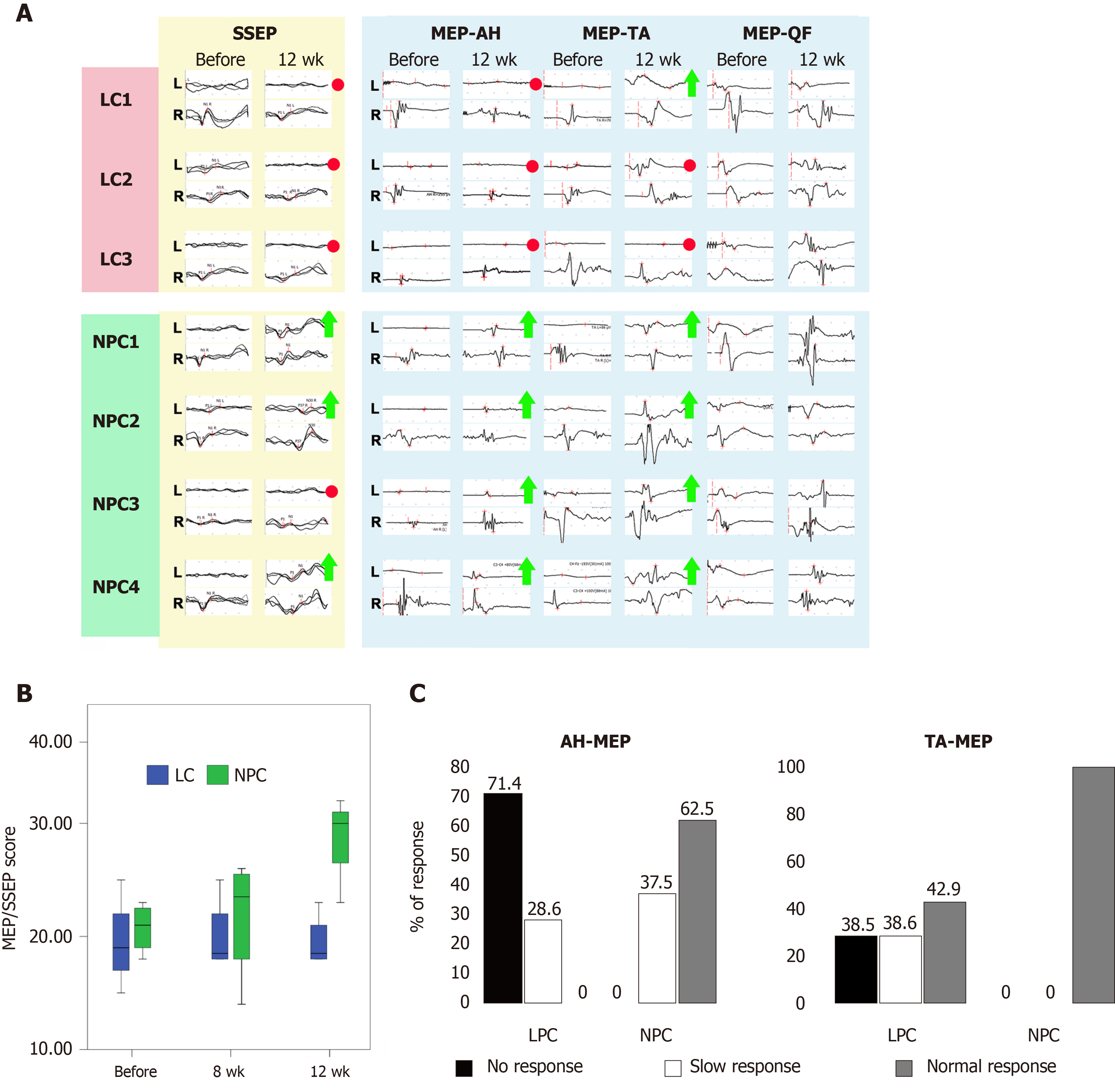Copyright
©The Author(s) 2021.
World J Stem Cells. May 26, 2021; 13(5): 452-469
Published online May 26, 2021. doi: 10.4252/wjsc.v13.i5.452
Published online May 26, 2021. doi: 10.4252/wjsc.v13.i5.452
Figure 3 Functional assessment.
A: Examples of somatosensory evoked potential (SSEP) and motor evoked potential (MEP) from all animals in the lesion control (LC) group and neural progenitor cell (NPC) group. Red circles indicate lack of recovery. Green arrows indicate recovery by 1 point of the EP scale. The MEP-musculus quadriceps femoris (QF) served as an internal control as the neighboring quadriceps femoris pathways were not specifically dissected and thus minimally affected. The MEP-quadriceps femoris showed no deterioration over time indicating the safety of the transplant procedure and the directly reprogrammed NPCs; B: Box plots of evoked potential scores in the LC and NPC groups (median, minimum, and maximum values and first and third quartiles). Differences between the groups 12 wk after the transplantation were significant (P < 0.01, as estimated using the mixed linear model); C: Semiquantitative analysis of the MEP-abductor hallucis and MEP-tibialis anterior latencies on the ipsilateral side 12 wk after directly reprogrammed NPC transplantation or vehicle injection. AH: Musculus abductor hallucis; TA: Musculus tibialis anterior.
- Citation: Baklaushev VP, Durov OV, Kalsin VA, Gulaev EV, Kim SV, Gubskiy IL, Revkova VA, Samoilova EM, Melnikov PA, Karal-Ogly DD, Orlov SV, Troitskiy AV, Chekhonin VP, Averyanov AV, Ahlfors JE. Disease modifying treatment of spinal cord injury with directly reprogrammed neural precursor cells in non-human primates. World J Stem Cells 2021; 13(5): 452-469
- URL: https://www.wjgnet.com/1948-0210/full/v13/i5/452.htm
- DOI: https://dx.doi.org/10.4252/wjsc.v13.i5.452









